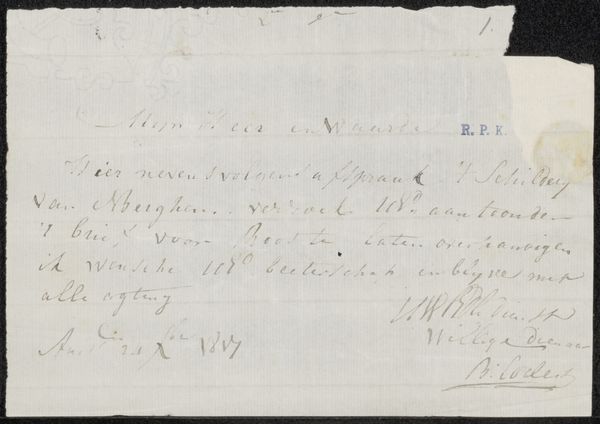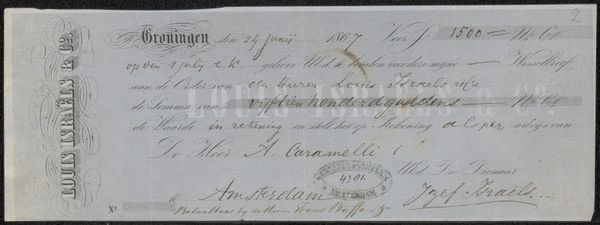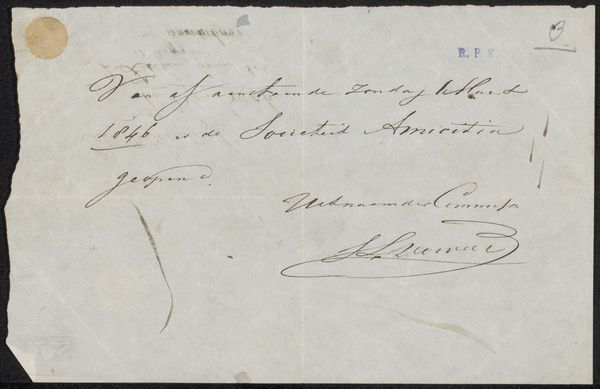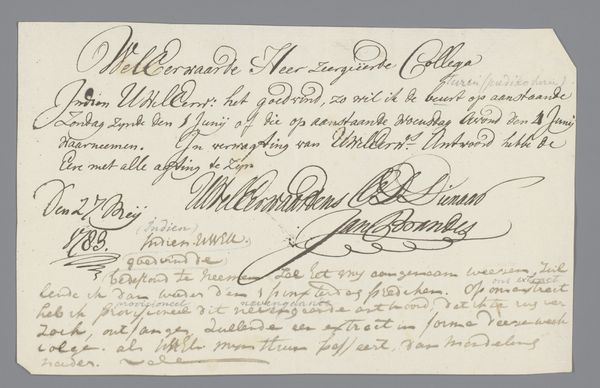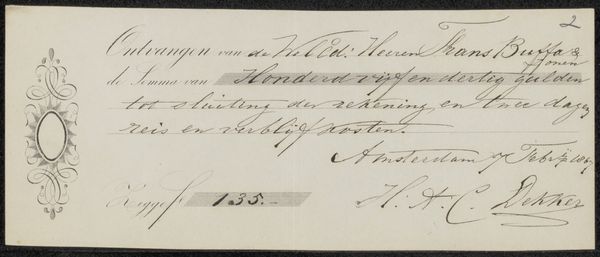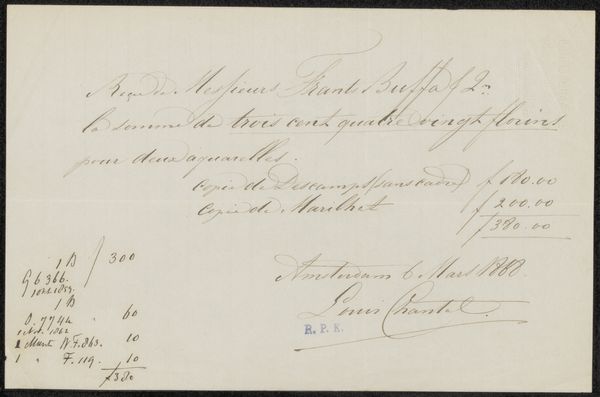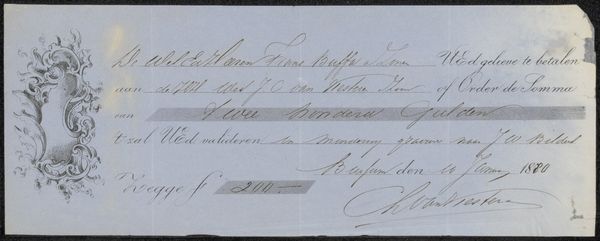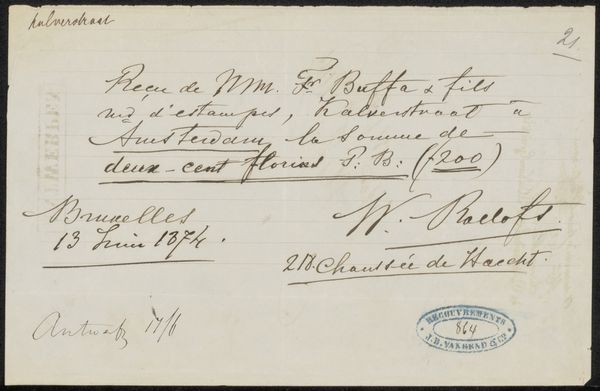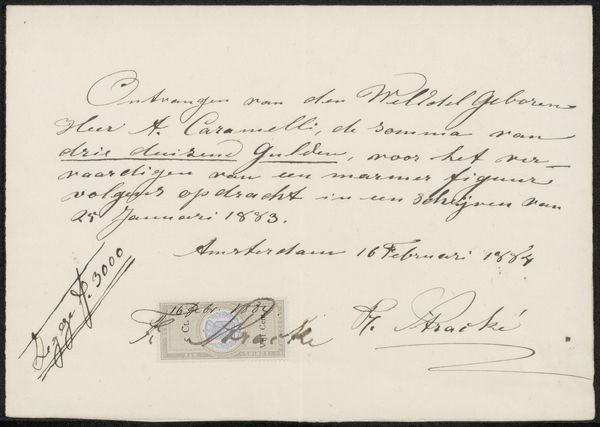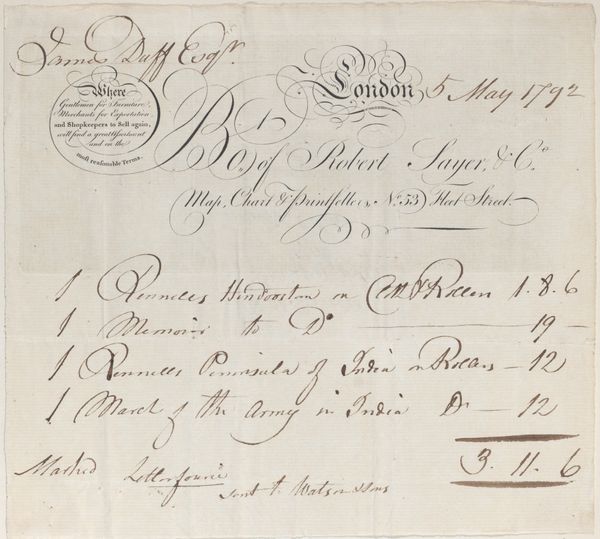
drawing, graphic-art, paper, ink, pen
#
drawing
#
graphic-art
#
hand-lettering
#
dutch-golden-age
#
hand drawn type
#
hand lettering
#
paper
#
personal sketchbook
#
ink
#
sketchwork
#
ink drawing experimentation
#
pen-ink sketch
#
sketchbook drawing
#
pen
#
storyboard and sketchbook work
#
sketchbook art
#
calligraphy
Copyright: Rijks Museum: Open Domain
Curator: Looking at this drawing, "Kwitantie voor Frans Buffa en Zonen," likely from 1874 by Philip Sadée, gives me this odd, comforting feeling. It’s basically an old receipt rendered with such elegant penmanship! The elaborate flourishes juxtaposed with mundane transactional details are almost humorous. Editor: I'm immediately struck by the authority projected by this everyday document. The beautiful calligraphy elevates it, almost weaponizes it with artistry, as if turning a simple financial record into a claim for cultural or societal significance. The little flourishes remind me how businesses of the time used such embellishments for legitimacy. Curator: Oh, totally! I see the little logo for "Kalser & Polack" nestled in the center— feels very corporate yet crafted by hand. It’s weirdly charming to imagine someone putting this much effort into something so… functional. Also, consider the hand-lettering! Every swirl tells its own story. Did everyone have impeccable penmanship back then? Editor: Not necessarily, but the display of competence through penmanship did represent a certain social standing and cultural value. These public displays, particularly financial transactions, spoke volumes about institutional accountability—it was performative, almost like advertising ethical business dealings through the visual language of elegance and legibility. Think of it as early brand management through art. Curator: Fascinating! So the fanciness isn’t just aesthetic; it’s communicating something about trustworthiness, value and sophistication. Like saying, "Hey, we're fancy, you can trust us with your money!". I suppose that has a certain eternal appeal in commercial spaces. The ink even has a pleasing warm tint to it now after so many years, wouldn’t you agree? Editor: Indeed, the sepia tones speak to layers of bureaucratic time and societal conventions, doesn't it? The artwork now hangs in the Rijksmuseum—a testament to how everyday items can gain new public meanings over time. Something initially made for purely utilitarian purposes evolves to hold aesthetic and historical significance in our culture. Curator: It just goes to show that even receipts can be kind of beautiful in their own way, right? Now I find myself staring at the details trying to decipher stories held in a beautiful bygone practicality. Editor: Absolutely, and seeing it here makes you question what ephemera of today may come to embody for future audiences. It suggests our current digital world may well have interesting, unseen dimensions.
Comments
No comments
Be the first to comment and join the conversation on the ultimate creative platform.


